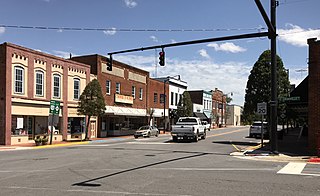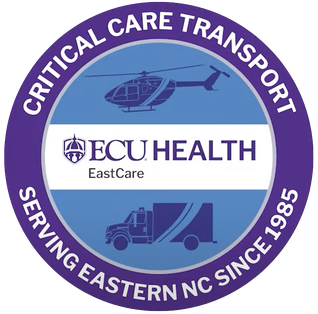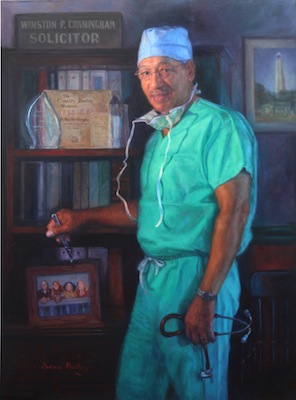
East Carolina University (ECU) is a public university in Greenville, North Carolina, United States. It is the fourth largest university in North Carolina and the only one in the state with schools of medicine, dentistry and engineering.

Windsor is a town and the county seat of Bertie County, North Carolina, United States. The population was 3,630 at the 2010 census, up from 2,283 in 2000. Windsor is located in North Carolina's Inner Banks region.

Greenville is the county seat and most populous city of Pitt County, North Carolina, United States. It is the principal city of the Greenville, NC Metropolitan Statistical Area, and the 12th-most populous city in North Carolina. Greenville is the health, entertainment, and educational hub of North Carolina's Tidewater and Coastal Plain. As of the 2020 census, there were 87,521 people in the city. The city has continued to see a rapid population increase and an economic boom with most of the growth being seen in the 20th and 21st centuries.

The Brody School of Medicine at East Carolina University (BSOM) is a public medical school located in Greenville, North Carolina, United States. It offers a Doctor of Medicine program, combined Doctor of Medicine / Master of Public Health and Doctor of Medicine / Master of Business Administration programs, and standalone Doctor of Philosophy and Master of Public Health programs. Brody is a national leader in family medicine, ranking No. 1 in North Carolina and No. 2 nationally in the percentage of graduates who choose careers in family medicine, based on the 2017 American Academy of Family Physicians report on MD-granting medical schools. Brody ranks in the top 10 percent of U.S. medical schools for graduating physicians who practice in the state, practice primary care and practice in rural and underserved areas. Brody graduates currently practice in 83 of North Carolina's 100 counties.
ECU Health Medical Center is a hospital located in Greenville, North Carolina. It is the primary teaching hospital for East Carolina University's Brody School of Medicine and is the flagship medical center for ECU Health. ECU Health is a Level 1 Trauma Center, one of 6 in the state of North Carolina. It is the only level I trauma center east of Raleigh, and thus is the hub of medical care for a broad and complicated rural region of over 2 million people. ECU Health Medical Center is the largest employer in Eastern North Carolina and 20th overall in the state.
East Carolina University School of Dental Medicine is the dental school at East Carolina University. It is North Carolina's second dental school, which enrolled its inaugural class in the fall of 2011. ECU SoDM was established to address the shortage of dentists in the rural regions across North Carolina. It serves North Carolina statewide by educating more dentists, with the primary focus of student recruitment being students who desire to return to rural and underserved areas to provide oral health care. The SoDM built 8 community service learning centers located in rural and underserved areas throughout the state. The students will complete nine-week rotations at the service learning centers during their final year of study.

Broughton Hospital is a psychiatric hospital located in Morganton, North Carolina. It is administered by North Carolina Department of Health and Human Services Division of Mental Health, Developmental Disabilities and Substance Abuse Services.

ECU Health is a not-for-profit, 1,447-bed hospital system that serves more than 1.4 million people in 29 Eastern North Carolina counties. The health system is made up of nine hospitals and more than 12,000 employees. ECU Health also includes wellness centers, home health and hospice services, a dedicated children's hospital, rehab facilities, pain management and wound healing centers and specialized cancer care. Their flagship hospital, ECU Health Medical Center, is a level I trauma center and serves as the teaching hospital for the Brody School of Medicine at East Carolina University in Greenville. Its smaller, community-based hospitals serve as patient feeders to the main hospital. The main hospital has shuttered services at these facilities only to reroute state licenses and permits back to the main hospital.
Chowan Hospital is a critical access hospital located in Edenton, North Carolina. It is a part of the ECU Health system. In 1947 Chowan Hospital opened. It moved in 1950 and again to its present position in 1970. A wing was added in 1988. It joined with UHSEC in 1998. The Emergency Department at Pitt County Memorial Hospital was linked to Chowan Hospital in April 2001. The hospital has 49 general hospital beds and 40 general nursing home beds. It also has three Shared Inpatient/Ambulatory Surgery and one Endoscopy operating rooms.
ECU Health Edgecombe Hospital, formerly Heritage Hospital, is a hospital located in Tarboro, North Carolina. It is a part of the ECU Health. Edgecombe General Hospital opened as a county-owned hospital in 1916. It succeeded Pittman Hospital, which opened in 1901. In 1959, the Hill-Burton Act helped combine Edgecombe General Hospital, with three other facilities. Edgecombe County sold the hospital to Hospital Corporation of America (HCA) in 1982. HCA opened a 127-bed facility in 1985, named Heritage Hospital. UHSEC bought Heritage Hospital in 1998 from HCA. The hospitals focus is as a community hospital. The hospital has 101 general and 16 rehabilitation hospital beds. It has five Shared Inpatient/Ambulatory Surgery, two Endoscopy, and one C-Section operating rooms.

The Outer Banks Hospital (OBH) is a critical access hospital located in Nags Head, Dare County on the Outer Banks. It is 60%/40% partnership of the ECU Health and Chesapeake Regional Healthcare (CRH). The hospital opened in March 2002. The hospital has 21 general hospital beds. It also includes three Shared Inpatient/Ambulatory Surgery, one Endoscopy, and one C-Section operating rooms.
Roanoke-Chowan Hospital is a hospital located in Ahoskie, North Carolina. It is a part of the ECU Health System.
ECU Health Duplin Hospital is a hospital located in Kenansville, North Carolina. It is affiliated with the ECU Health Medical Center & ECU Health in Greenville, NC.

ECU Health EastCare is the critical care mobile air and ground transport service of ECU Health at ECU Health Medical Center. It serves 31 counties in Eastern North Carolina. It is sponsored by ECU Health Medical Center and The Brody School of Medicine at East Carolina University. ECU Medical Center is the only level 1 trauma center east of Raleigh. EastCare's five full-time air ambulances constitute the largest air medical program in North Carolina and can serve a radius of 230 nautical miles around Greenville without refueling.

King House, also known as King-Bazemore House, is a historic plantation house located near Windsor, Bertie County, North Carolina. It was built in 1763, and is a 1+1⁄2-story, frame dwelling with brick ends. It has a gambrel roof and features two interior T-stack end chimneys. It is one of two known gambrel roofed dwellings with brick ends in North Carolina.

Bertie County Courthouse is a historic courthouse building located at Windsor, Bertie County, North Carolina. It was built in 1889, and is a 2 1/2-story, brick Neoclassical-style building with a gable roof topped by a polygonal cupola. In 1941, the portico was enlarged and wings added to the main block. A rear addition was built in 1974.

Caffeys Inlet Lifesaving Station is a historic lifesaving station located near Duck, Dare County, North Carolina. It was built in 1897–1898 by the United States Life-Saving Service near the location of Caffey's Inlet, a historic inlet that opened in 1770 and closed in 1811. It is a two-story, shingle style rectangular frame building with a hipped roof lookout tower. It has hip roofed porches connected by a shed roof porch. It was one of seven lifesaving stations established on the Outer Banks of North Carolina in 1874, to serve the ships that were lost in the treacherous waters off the North Carolina coast.

Paul Raymond Goldwyn Cunningham is a Jamaican American surgeon and medical educator known for pioneering as one of the few African American medical Deans existing in the United States. Their number becomes even smaller when only considering non-minority Med schools. Cunningham was appointed Dean of The Brody School of Medicine at East Carolina University in 2008., where he became a tenured Professor of Surgery in 1989. He graduated as an MD from the University of the West Indies in 1972, and further specialized in surgery at the Mount Sinai Hospital and Medical Center (Manhattan). He practiced and taught surgery for several years at the Bertie-County and Pitt-County Memorial Hospitals before joining academia. Cunningham has published numerous research articles in areas such as trauma, bariatric surgery, allograft and organ transplantation. In 2016 he was honored Dean Emeritus after serving Brody School of Medicine for 29 years, eight as dean.

The former L. Richardson Memorial Hospital, also known as Americas Health Care of Greensboro Nursing Facility, is a historic hospital located at Greensboro, Guilford County, North Carolina.

















